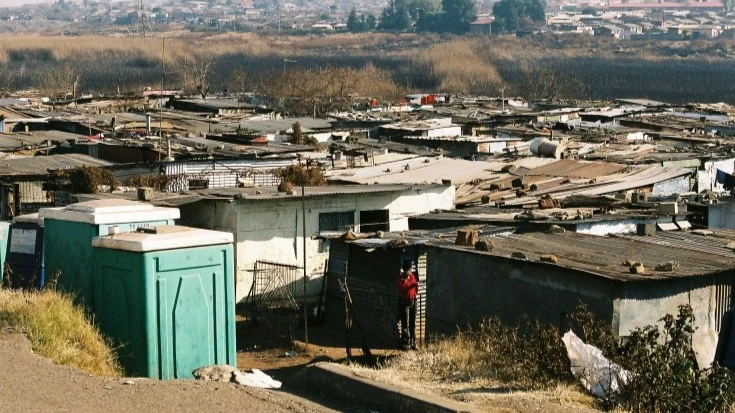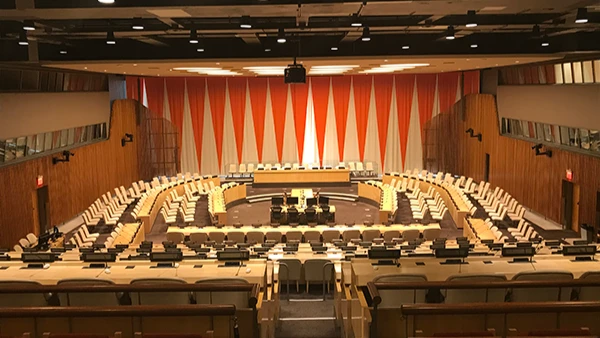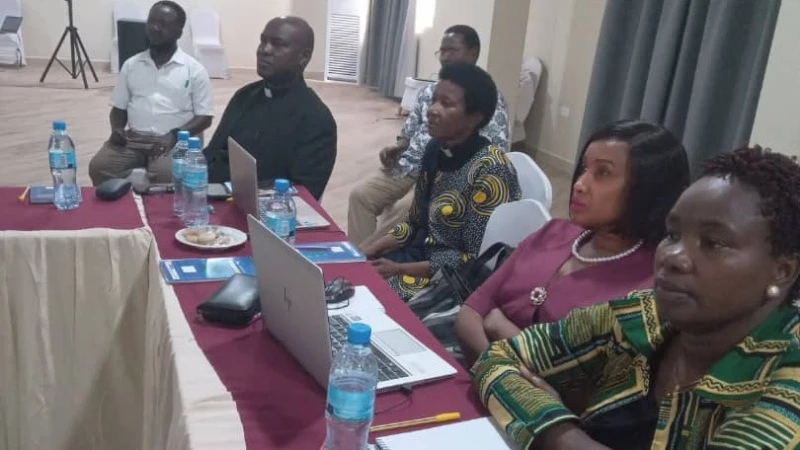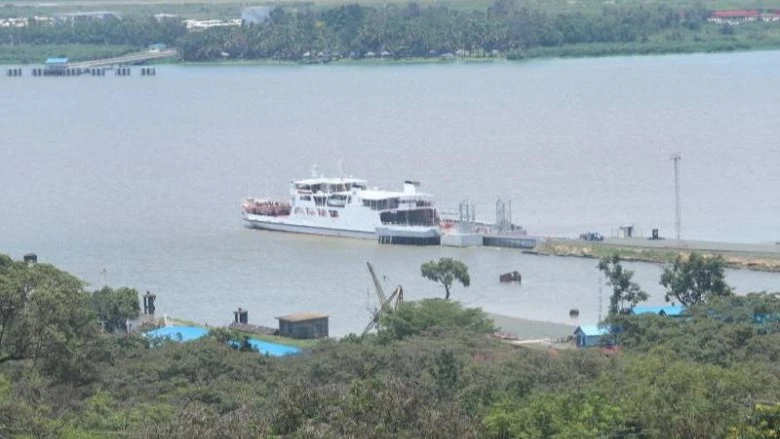Whiteleg shrimp farms threaten Mexico’s mangroves and the jaguars that inhabit them
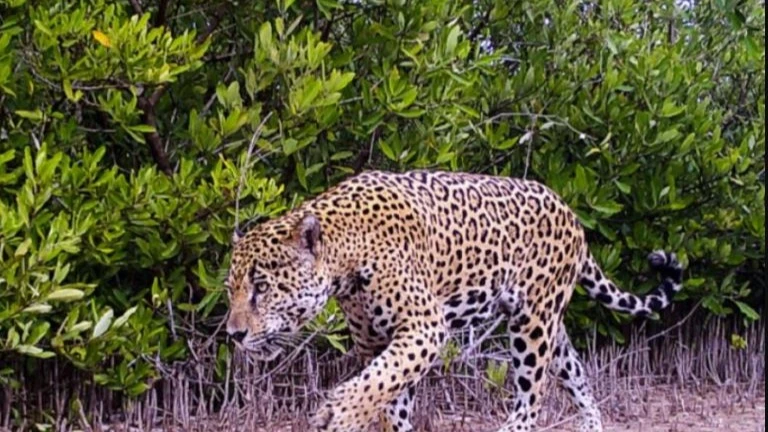
AMONG the spindly saline roots of the mangrove trees that line western Mexico’s coast, the jaguar is the ecosystem’s apex predator. Yet despite being at the top of the food chain, its existence is threatened by the abundance of another, much smaller species: the whiteleg shrimp.
Aquaculture of whiteleg shrimp (Litopenaeus vannamei), or Pacific white shrimp, has boomed along Mexico’s Pacific coast in the last couple of decades, in the process clearing swaths of mangrove forests and jeopardizing crucial habitats for jaguars (Panthera onca) in the western states of Sinaloa, Sonora and Nayarit.,
“With shrimp farms in Mexico, you see the destruction of the jaguars’ habitat,” Alfredo Quarto, co-founder of Mangroves Action Project, a conservation NGO, said. “But also of fish, crabs and other animals and birds. It’s very important to have a highly biodiverse supportive habitat.”
Habitat loss and poaching have shrunk jaguars’ distribution across Mexico by 54 percent, with about 4,000 to 5,000 of the big cats left in the wild today. In Nayarit, a 2022 study of a nearly 6,300-hectare (15,500-acre) wildlife corridor considered important for jaguar conservation found mangrove coverage there decreased from 35 percent to 26 percent, while land used for agriculture and aquaculture rose from 38 percent to 50 percent over a 20-year period.
Amid the habitat loss, a small reserve in Nayarit offers a haven for jaguars. La Papalota was a 368-hectare (909-acre) farm that in 2008 became the first private area in Nayarit that was voluntarily dedicated for conservation under a federal government program. The reserve is covered in thick mangrove forests to the south, with a mosaic of tropical deciduous and secondary forests elsewhere.
The area is too small to provide an entire home region for jaguars, which need thousands of hectares to maintain a viable population, according to Victor Hugo Luja, a conservation biologist and researcher studying the jaguars in La Papalota. But it provides a refuge for at least six jaguars that frequently use the territory to feed, mate and raise their young. The reserve has also provided a haven for about 12 jaguar births, according to Ignacio Vallarta, the landowner.
It’s an example of how small areas of protected land can act as a “stepping stone,” an important link between larger high-priority conservation spots for jaguars, allowing the species to move safely between big reserves. La Papalota sits between Marismas Nacionales Biosphere Reserve, a 133,854-hectare (330,761-acre) protected area that’s home to about 20 percent of Mexico’s mangroves, and the mangroves of San Blas farther south. It lies squarely in the corridor that was the focus of the 2022 study.
There are eight such biological corridors in Mexico’s northern Pacific region, and nationwide there are 581 reserves just like La Papalota, private land that’s been voluntarily given over to conservation. According to Luja, this patchwork of ADVC areas, as they’re known locally, spans a combined 1.14 million hectares (2.81 million acres) in 28 states, and are essential for providing mobility for wildlife like jaguars and ensuring the viability of their populations.
“Nobody disturbs [La Papalota],” says Mauricio Cortes Hernandez, regional coordinator of Pronatura Noroeste, a conservation NGO working with mangroves and jaguars. “The owners of La Papalota protect the jaguar, they monitor it, and we support them with cameras. That makes the jaguar survive.”
Yet outside the reserve, the remaining mangroves are under threat by encroaching urban development and shrimp farming, even in protected areas such as Marismas Nacionales Biosphere Reserve. Mangroves are legally protected in Mexico, but that hasn’t stopped people from clearing them to set up shrimp ponds. Authorities frequently fail to take action, conservationists said.
“Every time we visit the study site, we see new farms, new houses, new roads, and those rates of change are difficult for the jaguar populations to resist,” Luja said. “If the trend continues without taking action, I believe that in the space of 10 years, we could no longer have jaguar populations in the mangroves in Nayarit.”
The growth of shrimp farming
Mexico is Latin America’s second-largest shrimp producer, trailing only Ecuador. In 2021, it produced more than 200,000 metric tons of shrimp, 80 percent of which was farmed; by 2023, this rose to more than 243,000 metric tons. Over the last 28 years, the total surface area of shrimp ponds along Mexico’s Gulf of California increased by more than 1,100 percent between 1993 and 2021, to more than 114,000 hectares (282,000 acres), according to a 2023 study.
“Shrimp farming is a rampant industry that’s growing really rapidly,” Quarto says. “The value of shrimp is so high that there’s a competition between countries to get the most shrimp exported as possible. We have been fighting this industry for many years.”
The west coast of Mexico is key for shrimp farming, yet according to Luja, more than 40% of the shrimp farms don’t comply with federal regulations. With 980 shrimp farms in Nayarit alone, that would make nearly 400 of them noncomplying.
“These farms are not sustainable,” Quarto says. “They destroy the very environment that supports them.”
Shrimp farming’s surged over the past decade is linked to cartels, which use the farms for criminal activities such as money laundering, according to experts. This complicates regional conservation efforts and endangers environmentalists who face threats from criminal groups for opposing aquaculture expansion.
“There’s violence associated with shrimp farming industry, threats to people that protest,” Quarto says. “Local people have little they can do about this threat. They often don’t want to speak out for fear of their lives.”
Saving the jaguars
Conservation efforts have largely focused on establishing parks, reserves and protected areas across Mexico. However, experts emphasize the importance of connecting these areas through biological corridors and safe havens, like La Papalota, to ensure the long-term survival of jaguars.
These corridors are increasingly threatened by urban expansion, deforestation and agricultural growth. Environmentalists propose strengthening the protection of these sites by offering landowners financial incentives to preserve biodiversity through payment for ecosystem services. Educating local communities, whose livelihoods are tied to these areas, also promotes coexistence between people and jaguars.
“We work with communities to influence their practices,” Luja says. This includes teaching farmers about livestock protection to prevent retaliatory killings, and creating conservation zones for jaguars while allowing sustainable resource extraction by local communities.
Nonprofits and conservation groups, such as Mangrove Action Project and Pronatura Noroeste, continue to advocate for the protection of Mexico’s mangroves and jaguars, and to call for stricter regulations on the activities that threaten both. However, challenges persist, as disagreements between federal and state authorities on enforcement responsibilities complicate efforts to curb the expansion of shrimp farms.
“There is no coordination between different authority levels,” Octavio Aburto Oropeza, a marine ecologist and professor at the Scripps Institution of Oceanography in the U.S., tells Mongabay. “Municipality, state and federal authorities blame one another. This lack of coordination is one of the main things we need to solve.”
Some environmentalists accuse political authorities of taking bribes from cartels to turn a blind eye to shrimp farming and its associated criminal activities, highlighting the challenges of tackling illegal aquaculture. Additionally, mangrove deforestation is often reported only after it occurs, giving authorities an easy out to claim ignorance of its occurrence, Aburto Oropeza says. To address this, researchers are developing a “mangrove threat index,” which will predict mangrove loss risks in advance.
“It will be a game changer,” Aburto Oropeza says. “If these mangroves disappear, we can hold the government accountable, because they knew it would happen and they didn’t do anything.”
They also put hope in Mexico’s incoming environment minister, Alicia Bárcena, a biologist who takes office on Oct. 1 and has pledged to prioritize mangrove protection. Experts view her appointment as a promising step for mangrove conservation and, consequently, for the protection of jaguars and other species that depend on these ecosystems.
“Jaguars are very adaptable and resilient,” Luja says. “The only thing we need is to give them the space to continue carrying out their activities.”
By Sarah Brown
Top Headlines
© 2024 IPPMEDIA.COM. ALL RIGHTS RESERVED




